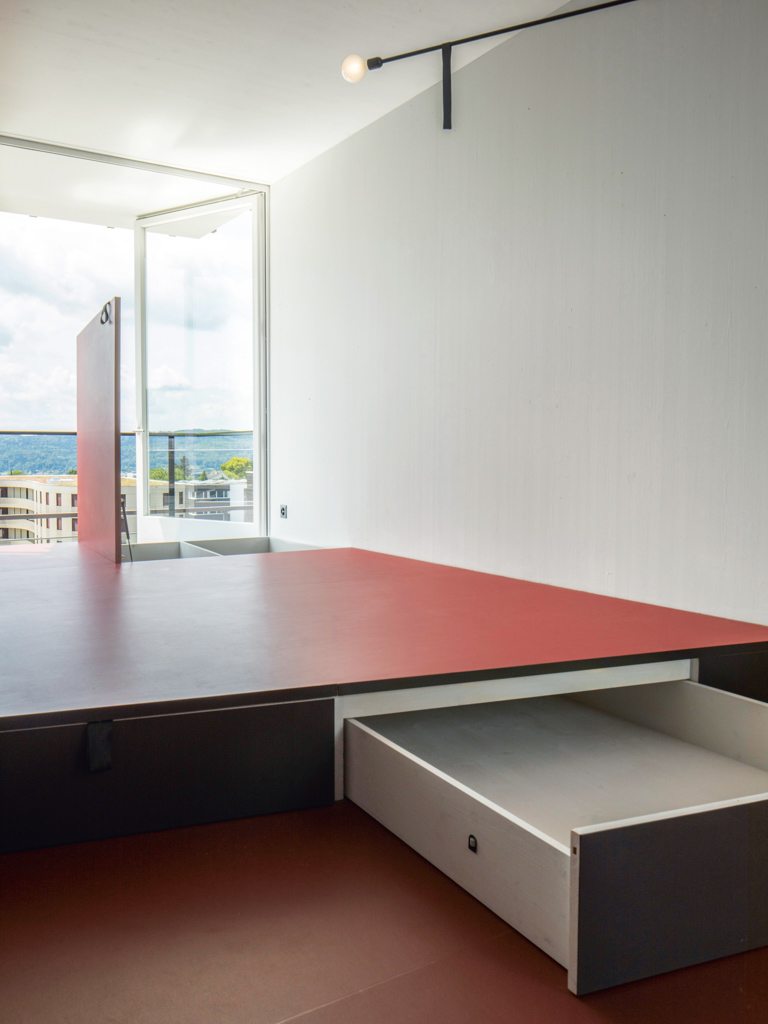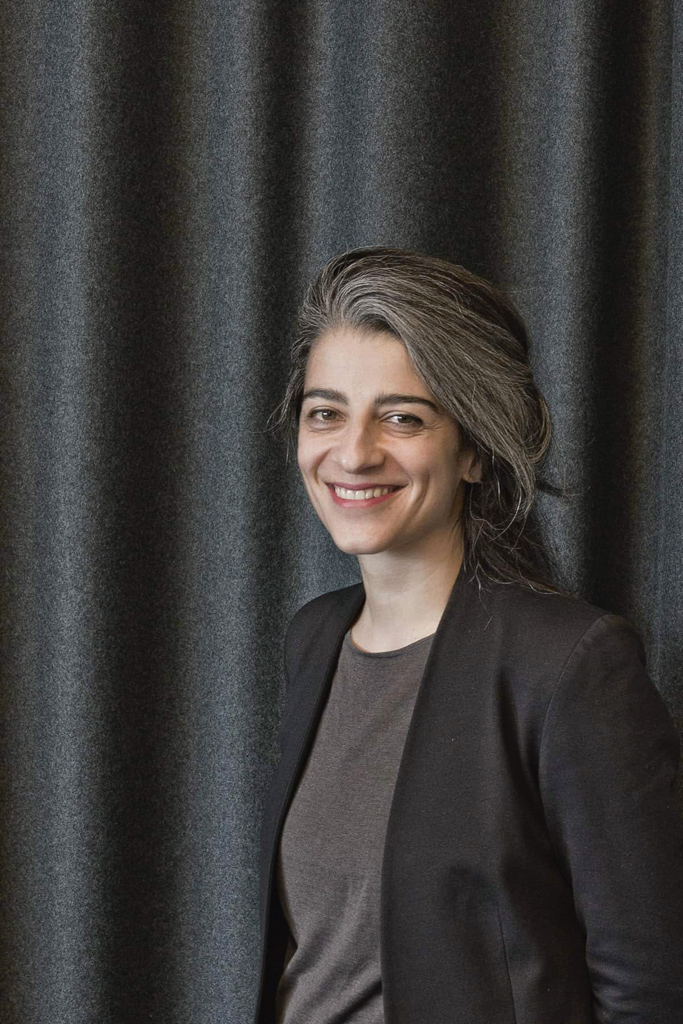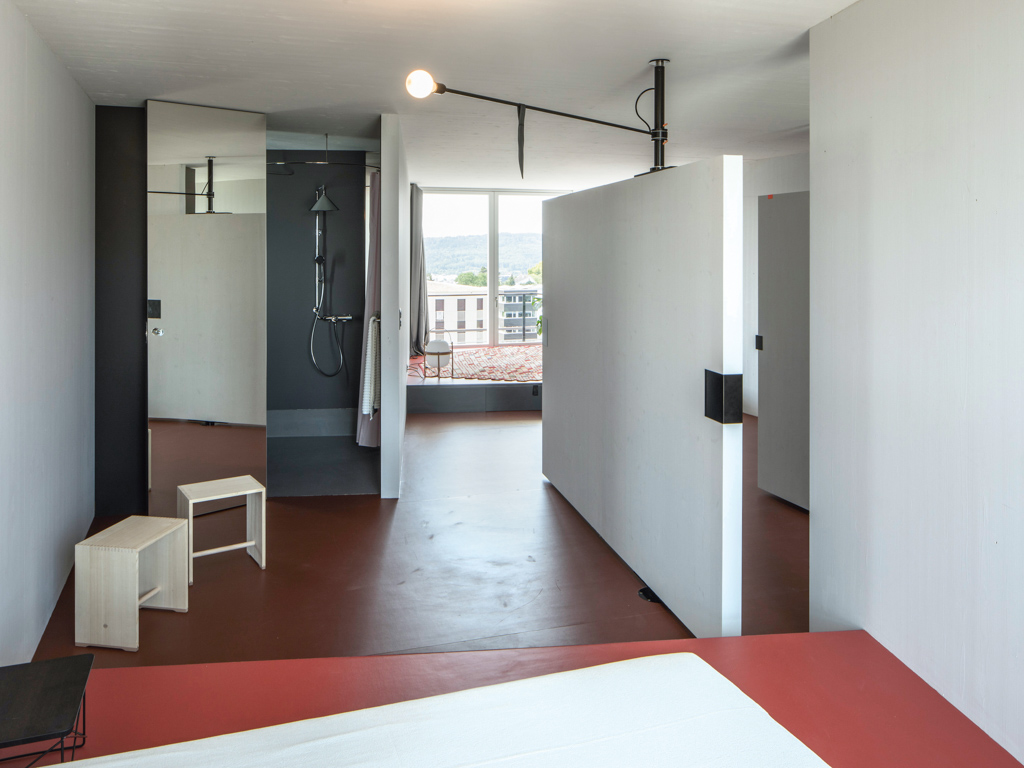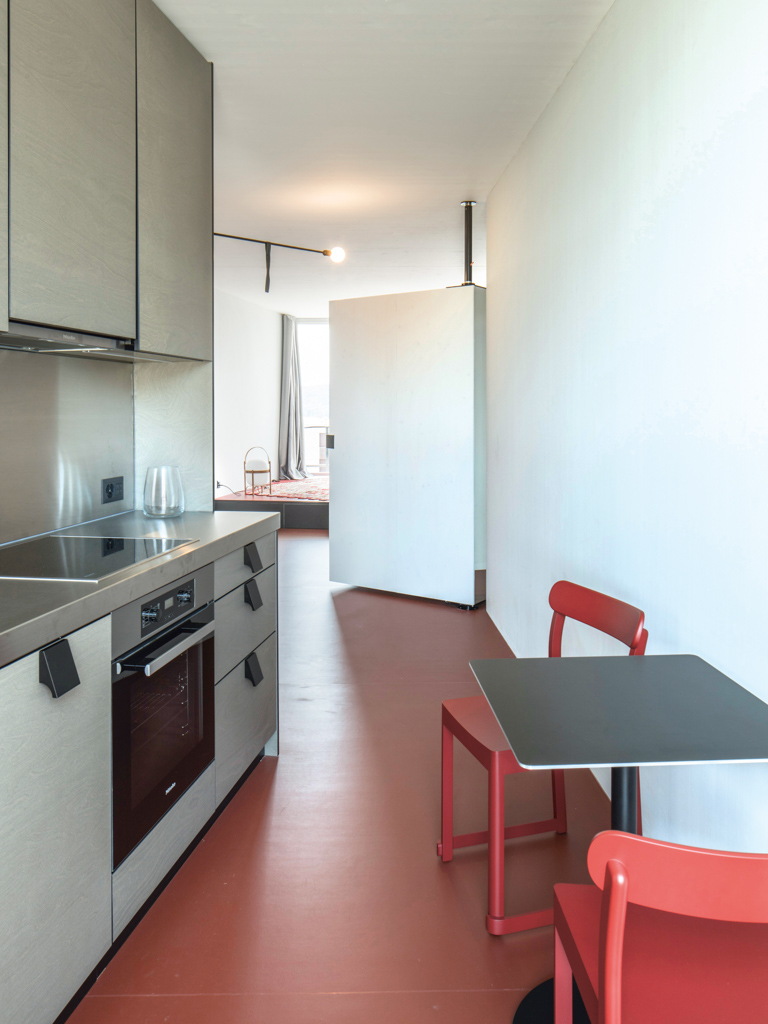Trying out a flexible home
Architect and professor Elli Mosayebi designed a small apartment in which even permanent components are movable. She's having the convertible apartment in Zurich evaluated by test residents over a one-year period.
You created what you call a “performative apartment” in Zurich. What’s the idea behind it?
In the city of Zurich, half of all households are single person households. A similar picture is emerging in other cities as well. Today pluralism reigns when it comes to forms of living. Apartment construction, however, is still oriented to the idea of a petty bourgeois family apartment. Most single apartments are merely shrunken down versions of floor plans used in the apartments of earlier times. The idea was to build small apartments that were as flexible as possible, which could be adapted to the individual and changing needs of the residents – depending on their mood and phase of life. In this sense, “performative” mean adaptable and convertible.
How do you create this convertible quality?
When it comes to modifying living spaces, there's a certain inertia factor. In our apartment prototype, we designed the performative elements to be easily movable and invite residents to want to modify their space. They’re intended to make residents want to change around their apartment, and enable movement, dance and choreography.
What exactly are the convertible elements?
The rooms in the performative apartment are not predefined. The apartment is rather a sort of hall that can be flexibly arranged. So we've installed a revolving wall, a revolving cabinet and pivoting lamps. A platform at the window conceals drawers and storage space while inviting to various uses. Little of one’s own furniture is required. To motivate the test residents to rearrange the movable design elements, the latter can be moved without much force and are equipped with handles and brackets that invite users to grab hold of them.
What sorts of flexible room uses can be achieved with them?
The movable elements can be used to create a separate sleeping area or private personal area when guests are staying over. The kitchen can be merged with the living space as an open concept, or divided off – when it appears too unkempt, for example. Small apartments often don’t offer any private personal space. Ours does, thanks to revolving walls.
How do you assess whether the performative apartment concept will prove successful in practice?
Starting August 1, 2019, a series of test residents moved into our “mock up” to try it out for a week. Angle of rotation sensors allow us to detect how often and in what ways they rearrange the elements to change the room layout. In addition, the test residents record in writing what they liked about the performative elements.
Will the performative apartment find its way into real-world apartment construction?
Yes. With an investor we’re planning a building for a central location in Zurich – featuring compact convertible apartments ranging from 20 to 50 square meters. Our test residents’ experience with the performative apartment and the performance of the technical elements will inform the construction and design of these apartments.

Flexible floor plans
Professor of architecture Elli Mosayebi experiments with a new type of apartment; one that can be modified as needed: the convertible or “performative” apartment. The apartment with movable walls and cabinets by Elli Mosayebi stands on the roof of a building at the Swiss Federal Institute of Technology in Zurich. Week after week, new people move into the black-clad wooden structure and record their experiences.
Architect with foresight
Elli Mosayebi is co-founder of the architectural firm EMI in Zurich. She began teaching as Professor of Architecture and Design at the Swiss Federal Institute of Technology, Zurich in 2018. Previously she taught at Darmstadt Technical University.


